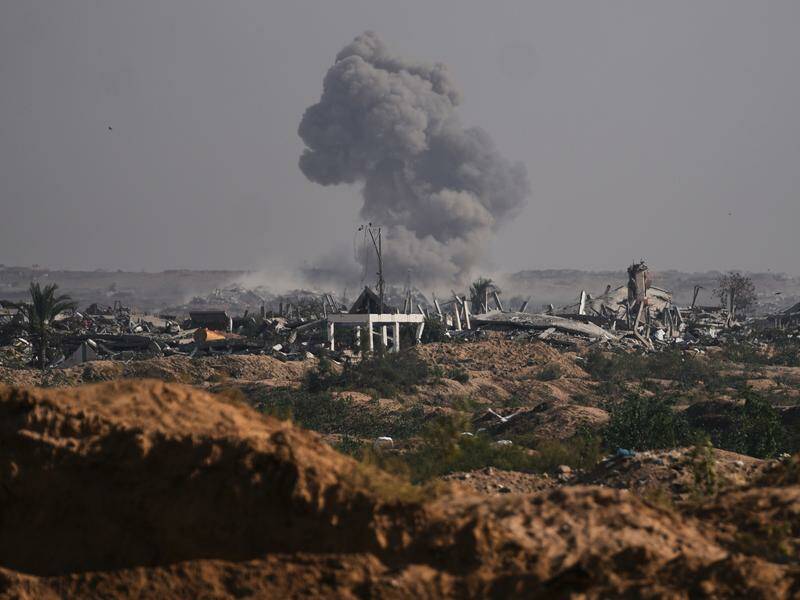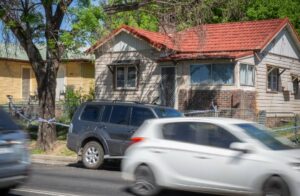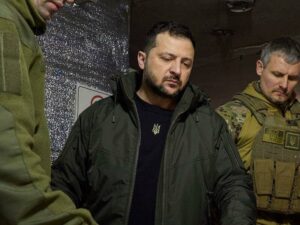
Israeli forces have reportedly killed three Palestinians in Gaza, underscoring the ongoing violence that continues to challenge a fragile ceasefire established more than six weeks ago. The incidents, which occurred on Monday near the demarcation line of Israeli control, involved an Israeli drone strike that killed two individuals east of Khan Younis and a tank shell that killed another person in Gaza City.
According to Palestinian medics, these actions highlight the precarious nature of the truce brokered on October 9, 2023, which has been hailed globally but has struggled to address underlying issues. The Israeli military stated it acted in response to what it identified as “terrorists” crossing the yellow line, indicating an immediate threat to its troops.
The armed wing of the Palestinian Islamic Jihad confirmed the discovery of a hostage’s body in an area controlled by Israeli forces but did not specify when the handover might occur. This body is among three hostages still believed to be in Gaza. The ceasefire agreement allowed for the exchange of hostages, with Hamas releasing all 20 surviving captives in return for nearly 2,000 Palestinian prisoners held by Israel, along with provisions for the return of the remains of 28 hostages in exchange for the remains of 360 militants.
Since the agreement, both sides have accused each other of violating terms and failing to adhere to commitments. The Gaza Health Ministry reported that at least 342 Palestinians have been killed by Israeli fire since the truce began on October 10, 2023. In contrast, Israel has stated that three of its soldiers have lost their lives due to militant gunfire during the same period.
The situation has drawn international attention, with the United Nations Security Council formally endorsing a peace plan put forth by former US President Donald Trump. This initiative calls for an interim technocratic Palestinian government in Gaza, overseen by an international “board of peace” and supported by a multinational security force. The plan also includes reforms for the Palestinian Authority, which is based in the Israeli-occupied West Bank.
Former British Prime Minister Tony Blair, who played a significant role in developing the peace plan, met with Palestinian Authority Deputy Leader Hussein al-Sheikh in the West Bank on Sunday. Sheikh mentioned in a social media post that they discussed the implications of the Security Council resolution and the requirements for Palestinian self-determination.
In Cairo, a Hamas delegation led by exiled chief Khalil al-Hayya engaged in talks with Egyptian officials regarding the next steps in the ceasefire process. According to Hamas spokesperson Hazem Qassem, the group expressed concerns about Israeli actions undermining the agreement.
Negotiating the composition and mandate of the proposed international security force remains a significant challenge. Israel has insisted that any such force must disarm Hamas, a condition the group has resisted without the establishment of a Palestinian state—a prospect that Trump’s plan envisions as a long-term goal, but which Israel has rejected.
Qassem noted that the force should play a role in safeguarding Palestinian civilians from Israeli military actions. A Palestinian official involved in the Cairo discussions expressed concerns about the lack of clarity regarding the deployment of international forces.
“There is complete uncertainty; the Americans haven’t put forward a detailed plan. It is unclear what kind of forces will be involved, their specific tasks, and their locations,” the official, who requested anonymity, stated. “Deploying forces without a political framework, without consensus from all Palestinian factions, would complicate matters significantly.”
As discussions continue, the situation in Gaza remains volatile, with the potential for further escalation. The international community watches closely, hoping for a resolution that can bring lasting peace to the region.







